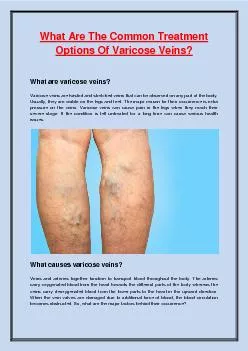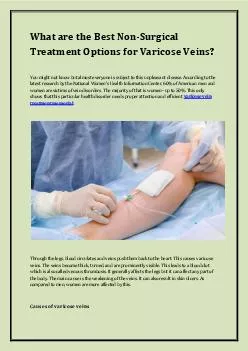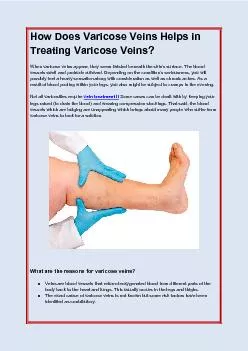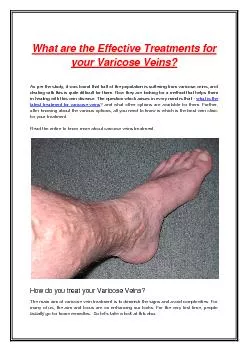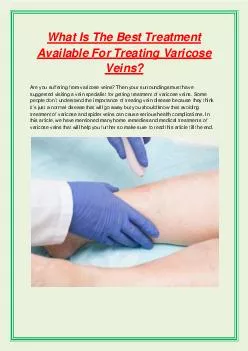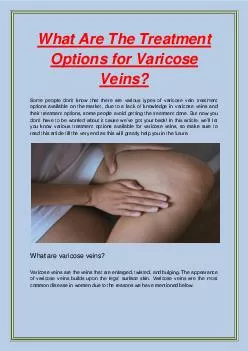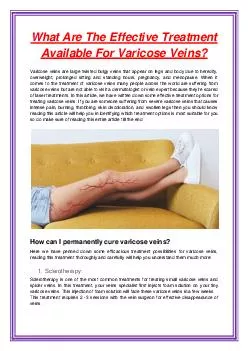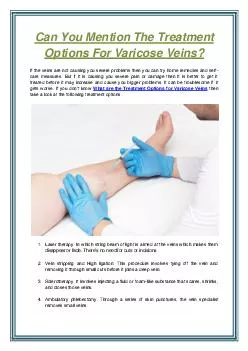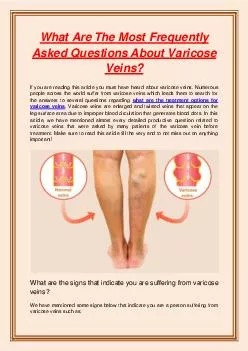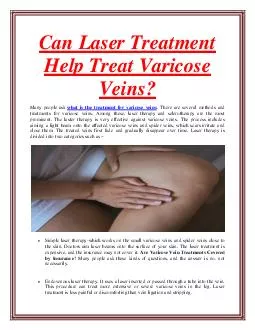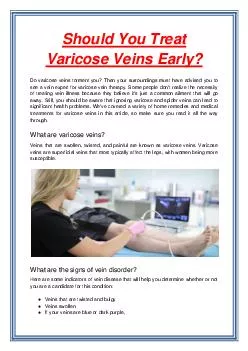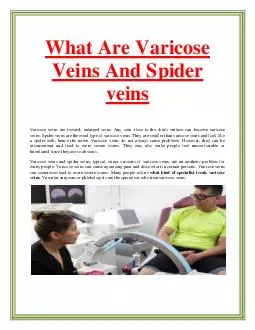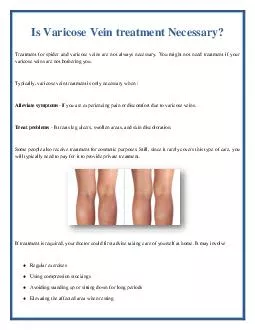PDF-What Are The Common Treatment Options Of Varicose Veins?
Author : FredkBurton | Published Date : 2021-11-17
Varicose veins are twisted and stretched veins that can be observed on any part of the body Usually they are visible on the legs and feet
Presentation Embed Code
Download Presentation
Download Presentation The PPT/PDF document "What Are The Common Treatment Options Of..." is the property of its rightful owner. Permission is granted to download and print the materials on this website for personal, non-commercial use only, and to display it on your personal computer provided you do not modify the materials and that you retain all copyright notices contained in the materials. By downloading content from our website, you accept the terms of this agreement.
What Are The Common Treatment Options Of Varicose Veins?: Transcript
Download Rules Of Document
"What Are The Common Treatment Options Of Varicose Veins?"The content belongs to its owner. You may download and print it for personal use, without modification, and keep all copyright notices. By downloading, you agree to these terms.
Related Documents

